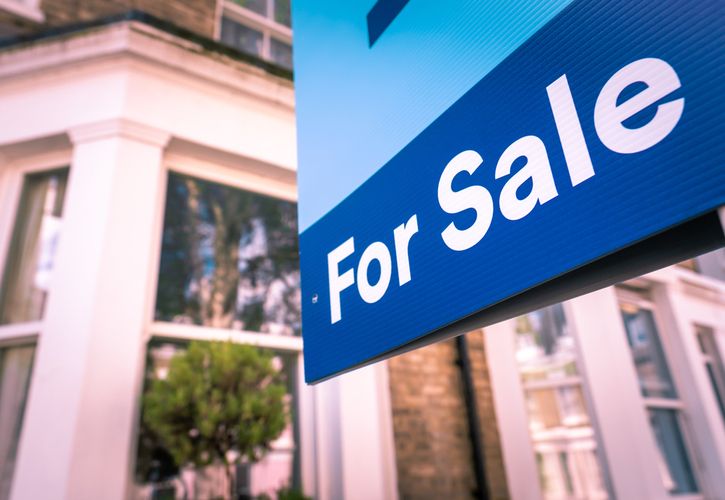UK DIY News
Record Number Of Former Rental Properties For Sale

- The proportion of former rental properties moving into the sales market is at its highest on record, indicating more landlords are selling up, some potentially driven by the mooted increase in Capital Gains Tax in the Autumn Statement on 30th October:
- 18% of properties now for sale were previously on the rental market, compared with 8% in 2010
- The hotspot is London, where nearly a third (29%) of homes for sale were previously for rent, followed by Scotland (19%) and the North East (19%)
- The previous five-year average for homes moving from the rental to sales market in Great Britain is 14%, suggesting that this isn’t a sudden mass exodus of landlords
- The number of new properties coming to the market for sale is now 14% ahead of last year following a post-Bank Rate cut surge, however, there is still no glut of properties for sale:
- The number of new properties coming to market is a smaller +3% up on this time in 2019
- Rightmove suggests that there needs to be incentives for landlords to stay and continue to invest in the private rented sector to provide a healthy market for tenants
The latest real-time market data from the UK’s biggest property website Rightmove, reveals that the proportion of former rental properties moving into the sales market is at its highest point on record, suggesting more landlords are selling up.
The Autumn Statement on 30th October is one potential driver of the increase, as it is mooted to include an increase to Capital Gains Tax, which could affect landlords.
Nearly a fifth (18%) of homes currently for sale were previously available on the rental market, compared with 8% at this time in 2010.
The trend is most prominent in London, where nearly a third (29%) of all homes for sale were previously available on the rental market. Scotland is second on the list (19%) and the North East is third (19%).
However, the trend has been slowly increasing for many months, and the previous five-year average for homes switching from the rental market into the sales market is 14%, suggesting that despite the recent spike, we’re seeing an increasing trend rather than a sudden mass exodus of landlords.
The overall number of new properties coming to the market for sale is now up by 14% versus 2023, following a post-Bank Rate cut surge in new seller activity. The certainty of the new government followed by the first Bank Rate cut for four years has led to a boost in both buyer and seller activity.
The data does compare to a much quieter period during 2023, when home-movers were impacted by high inflation and peak mortgage rates. Compared with pre-pandemic 2019, the number of homes coming up for sale is a smaller +3%, highlighting that there is still not a glut of homes for sale.
Rightmove suggests that there needs to be more incentives for landlords to stay in, rather than exit the private rented sector, and continue to invest in more homes for tenants.
Rightmove’s rental market tracker has frequently reported on the impact that a low-supply, high-demand rental market has on rising rents for tenants, and more homes leaving the rental sector is likely to squeeze supply and costs further.
Tim Bannister, Rightmove’s property expert, says: “In recent years it has become more attractive for some landlords to leave the rental sector rather than to continue to invest in it, due to rising costs, taxes, and legislation. A healthy private rented sector needs landlord investment to provide tenants with a good choice of homes. We’ve seen over the last few years how the supply and demand imbalance can contribute to rising rents, so there is a worry that without encouragement for landlords to stay in rather than leave the rental sector, it is tenants who will pay the price.
“However, despite the trend of more landlords choosing to sell up, it doesn’t appear to be a mass exodus, and we will need to monitor the longer-term impacts of what happens to the rental supply that is put up for sale. For example, these homes could provide first-time buyers with more choice. They might also be purchased by other landlords and put back into the rental market, which would signal a changing of the guard rather than a complete exit from landlords. In any case, we hope the government is considering ways it can support landlords and the private rented sector ahead of the Autumn Statement.”
Marc von Grundherr, Director of Benham and Reeves in London said: “The potential equalising of CGT is, of course, a concern for many landlords. If the Labour government was to follow through with it, it could make for a significant increase in the tax paid by the average landlord when the time did come for them to exit the sector. This would be yet another blow to those who provide vital housing stock that is sorely needed within the rental sector, following a string of legislative changes already introduced in recent years to dent profitability.
Despite this, we’re simply not seeing the exodus of landlords that is so often reported, as despite such changes, buy-to-let remains a strong investment. It’s certainly one that most take with a very long-term view and they expect ups and downs, but generally speaking, the returns are consistently good.”
Source : RightMove
Image : William Barton / shutterstock.com / 1787318480
Thank you for the excellent presentation that you gave at Woodbury Park on Thursday morning. It was very interesting and thought-provoking for our Retail members. The feedback has been excellent.











































